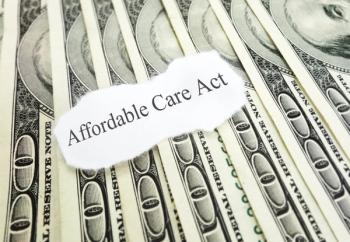
BLOG: Penn State wellness program proves a complete failure
Employer plans must evaluate their wellness culture
The last thing the wellness industry needs is another negative news cycle.
LewisIn September, a New York Congresswoman asked the Equal Employment Opportunity Commission to investigate employer wellness programs after finding some intrusive questioning on a Penn State employee health risk assessment (HRA). The assessment was a necessary part of the University’s wellness program, which included financial incentives or-more accurately-penalties, for not participating.
A Highmark official addressing the employees’ concerns (captured on
The postponement decision left clear “losers” in its wake, but allows opportunity for some “winners” who could restore the wellness industry patina which has lately gone missing.
Losers
The losers in the Penn State program were Highmark, WebMD and consultant Ron Goetzel.
While I felt the YouTube video showcased Highmark’s lack of understanding of true wellness culture, the executives were also unable to explain the economic rationale for their punitive program, largely because
WebMD produced the university-employee HRA, which failed on every count imaginable. First, it asked questions most respondents found so intrusive and inappropriate-about pregnancy intentions, feelings of depression, drinking habits-that faculty leaders recommended lying on the HRA. Second, those and other questions would have been of no value in managing the population anyway.
For instance, asking about future pregnancies was supposed to “help” women who were planning on becoming pregnant. However, women planning to get pregnant would be the ones least likely to need or want their help. Women who get pregnant unintentionally, who might not be taking prenatal vitamins for example, would be the target for intervention, but HRAs can’t find them anyway.
Third, several of the recommendations in the readout from the HRA, like the testicle self-examination and the prostate-specific antigen test recommendation, get “D”
Ron Goetzel has been Highmark’s consultant for wellness for years. One way or the other, Highmark did exactly the opposite of what most experts would recommend, which would have been:
1)
2) Far fewer preventive doctor visits, reflecting not just outside opinion, but also a recent Truven report showing that preventive medical care is already the largest and fastest-growing component of health spending.
Winners
The “winner” list, ironically, includes the entire wellness industry (both health plan captive programs and independent vendors), which now has a chance to reconsider its headlong rush into penalty-based programs that would have created a country full of Penn States.
Employees also won. Penn State’s employees were empowered not by participating in the program but by forcing the administration to rescind it. This victory shows that it is possible for employees to stand up to ill-conceived and poorly executed programs being done to them instead of for them. A program done for Penn State employees would have relied on popularity rather than penalties. For instance, simply opening the extensive network of fitness facilities and pools to spouses and dependents would have cost much less than making everyone go to the doctor, and would have helped to create a culture of wellness rather than a culture of resentment.
The last set of winners is the emerging group of industry leaders. As the industry moves away from punishment, poor clinical choices and invalid metrics, companies like
As the wellness true believers have continued to lose credibility, many in this field are looking to companies that step up and assume leadership roles, and tack away from discredited “HRA+screening+doctor” models towards a focus on wellness culture. Count me among those wishing them the best in their efforts.
Newsletter
Get the latest industry news, event updates, and more from Managed healthcare Executive.






















































